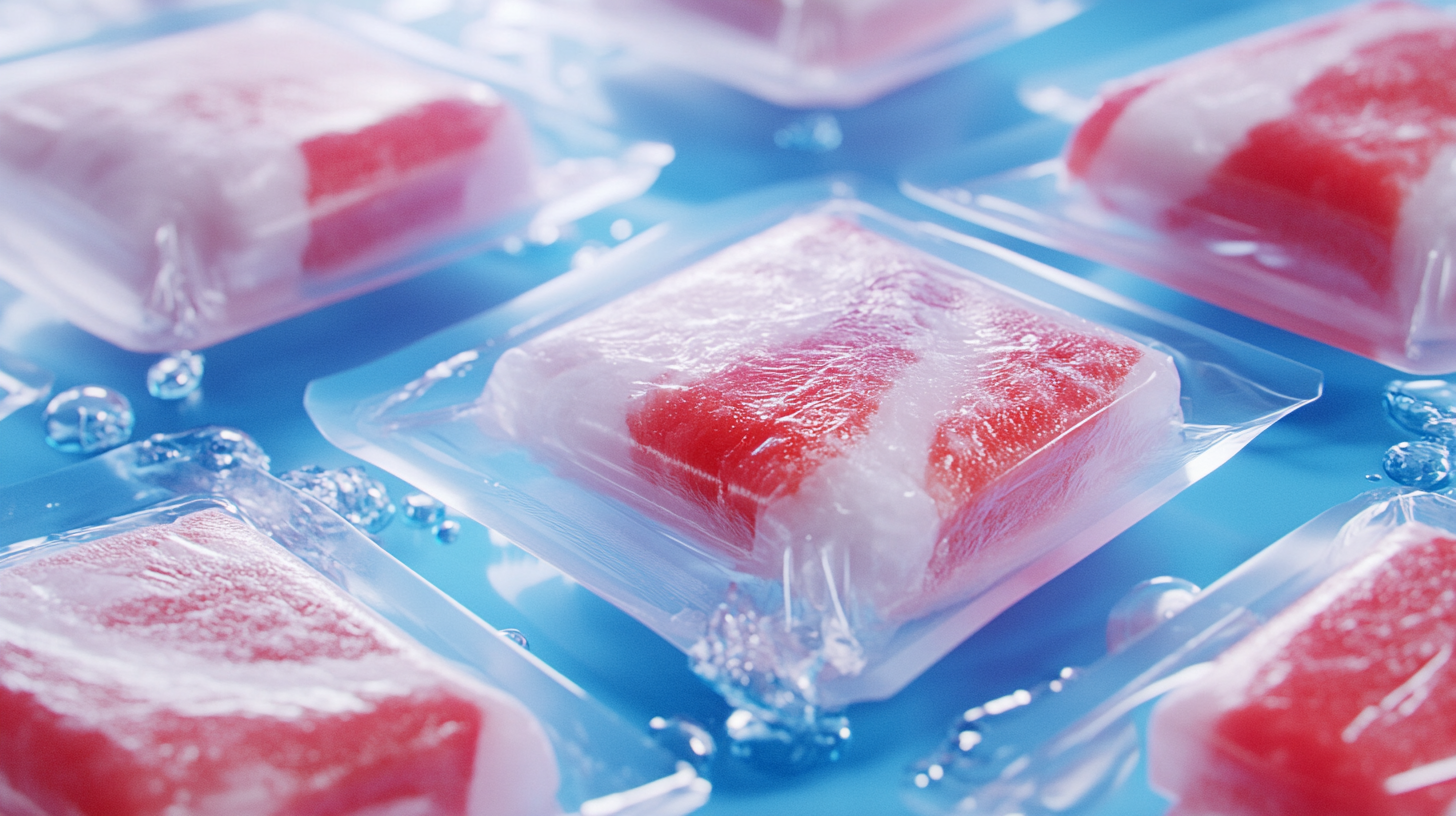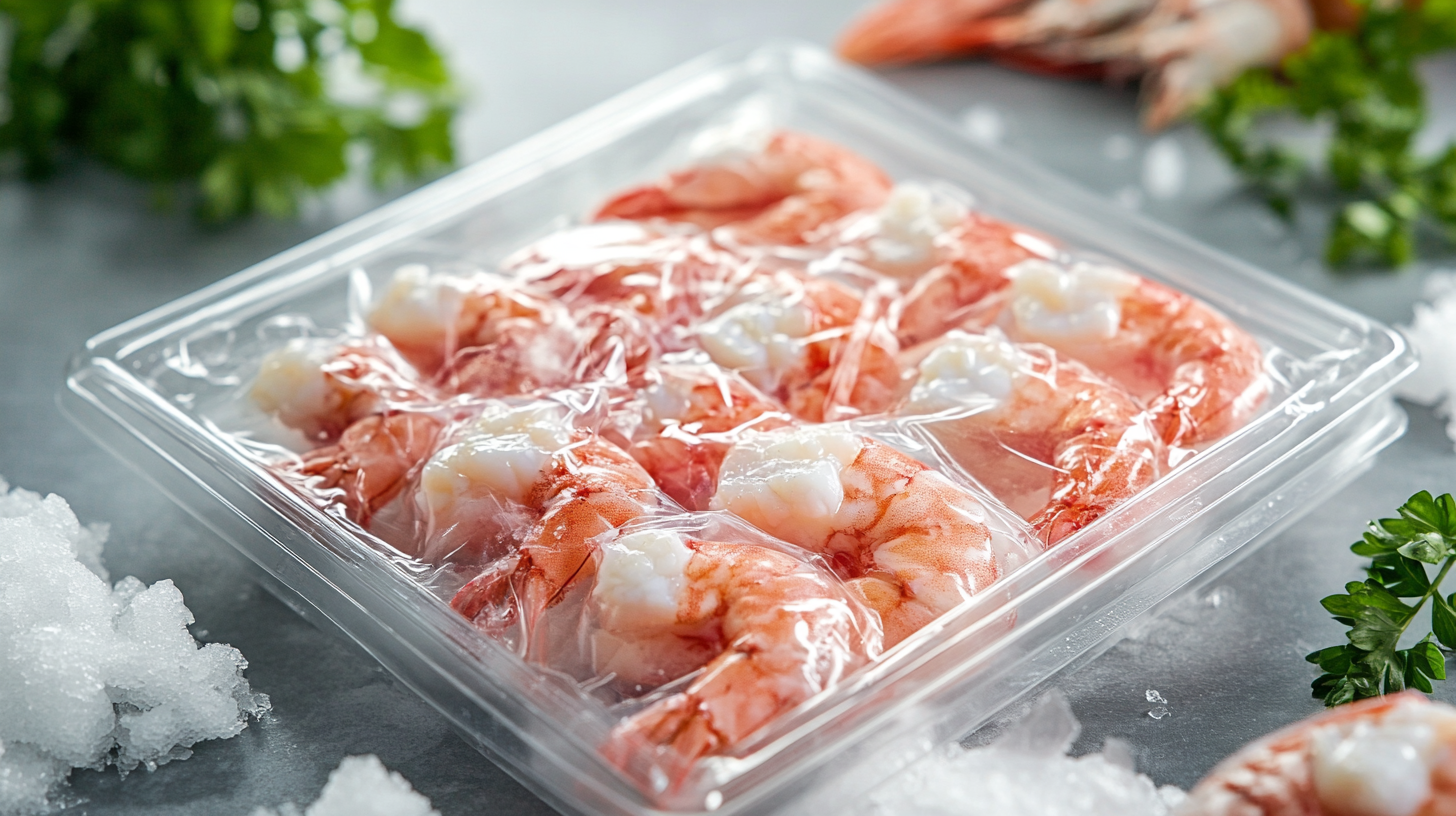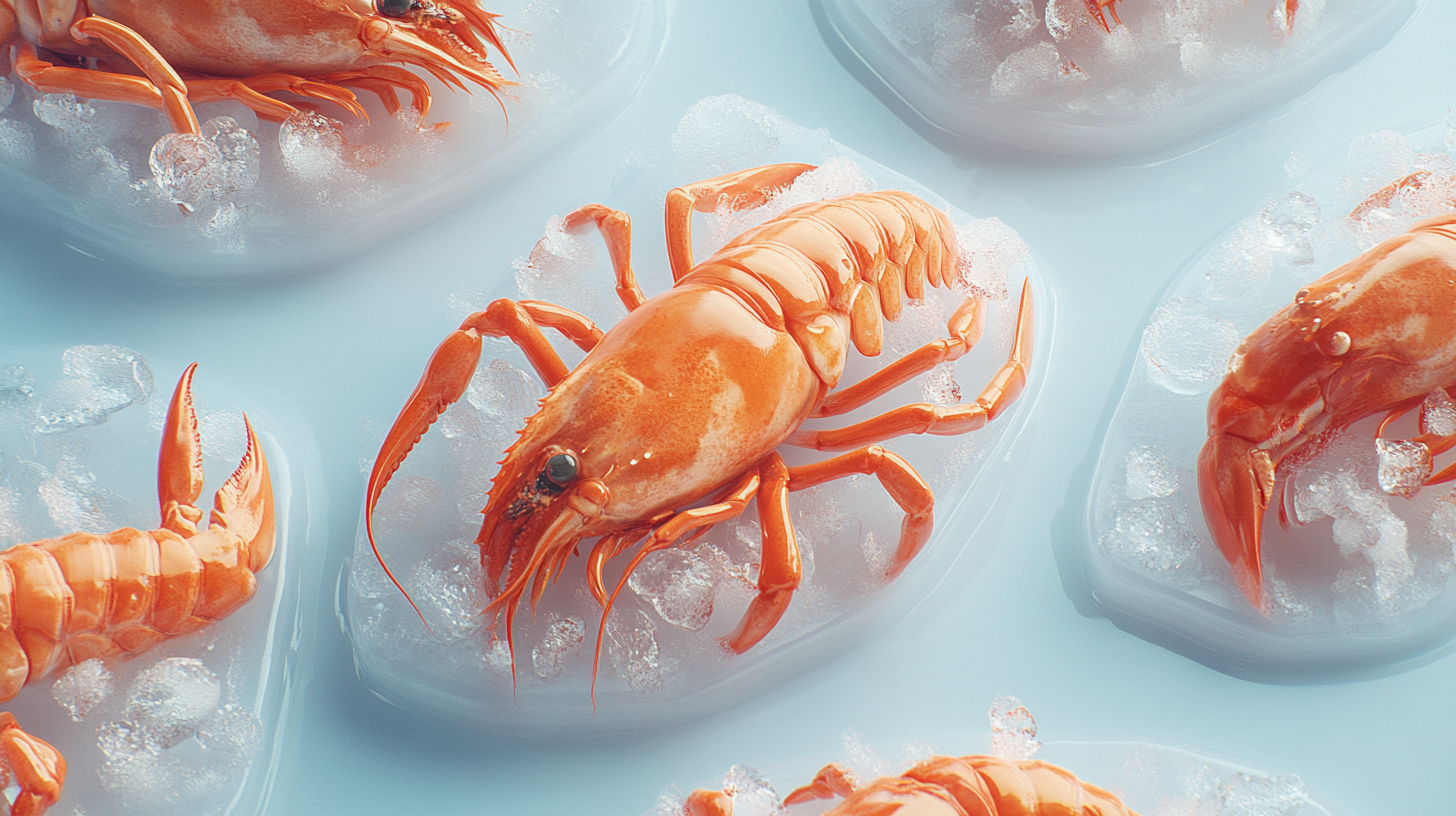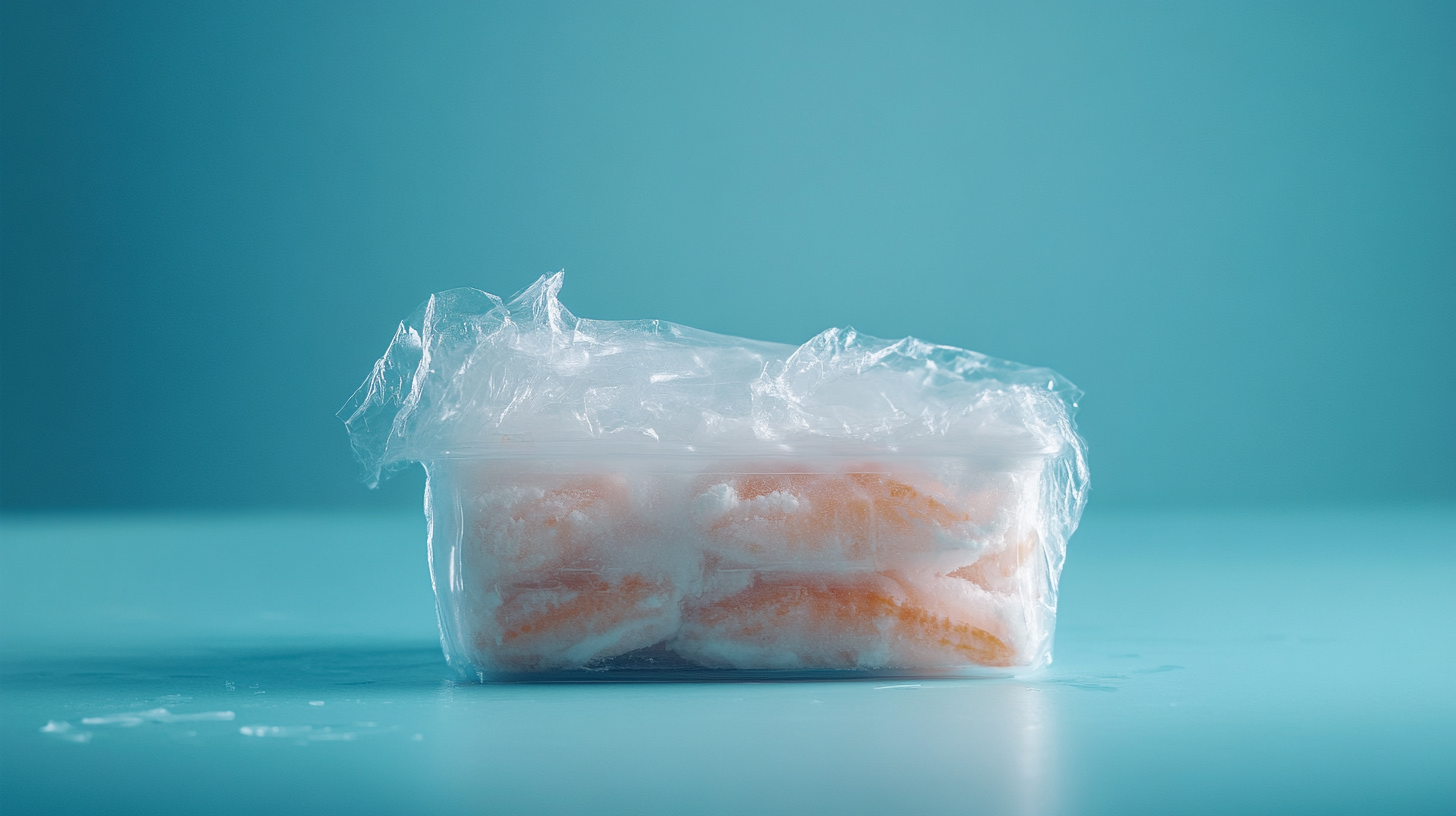The Emerging Trends in Frozen Seafood Packaging for Global Buyers
As the global demand for frozen seafood continues to rise, the packaging solutions that protect and preserve these products are evolving to meet both consumer needs and environmental standards. According to a recent report by the Seafood Industry Association, the frozen seafood market is projected to reach USD 92 billion by 2027, growing at a CAGR of 4.5% from 2020. This growth underscores the importance of innovative Frozen Seafood Packaging that not only extends shelf life but also enhances the aesthetic appeal of products on retail shelves.
Additionally, the increasing awareness around sustainability has driven manufacturers to adopt eco-friendly materials and practices in their Frozen Seafood Packaging. A study presented by Market Research Future highlights that sustainable packaging is expected to capture a substantial share of the seafood packaging market, with biodegradable and recyclable materials gaining traction. As global buyers navigate this shifting landscape, understanding the emerging trends in Frozen Seafood Packaging becomes crucial for making informed purchasing decisions that align with both consumer preferences and regulatory requirements.

Innovative Materials Transforming Frozen Seafood Packaging Practices
The pursuit of sustainable packaging in the frozen seafood sector is gaining momentum, driven by innovative materials that seek to transform traditional practices. As consumers become more engaged in reducing the environmental impact of packaging, the industry is responding with advancements that not only enhance food safety but also address eco-consciousness. Recent developments in edible sensors, for instance, offer a promising solution to track temperature changes in frozen foods. These sensors, made from natural components, provide real-time monitoring to ensure the quality and safety of seafood, while also minimizing waste. In the broader context of food packaging, the global market is poised for significant growth, with a projected compound annual growth rate (CAGR) of 5.3%. This trend is propelled by an increasing demand for innovative and sustainable packaging solutions that meet consumer expectations for eco-friendly practices. Companies like Cadbury are setting benchmarks by committing to use up to 80% recycled plastic in their packaging by 2025, showcasing how major players can lead the way in sustainability. As the frozen seafood market continues to expand, projected to reach USD 31.9 billion by 2032, the shift towards packaging that balances performance with environmental responsibility will remain crucial for industry stakeholders.

Sustainability Focus: Eco-Friendly Solutions in Seafood Packaging
The seafood industry is witnessing a significant transformation, particularly in the area of packaging. As global buyers increasingly prioritize sustainability, the demand for eco-friendly solutions has risen dramatically. Traditional seafood packaging methods often rely on plastics that harm marine ecosystems and contribute to pollution. In response, manufacturers are exploring innovative materials that minimize environmental impact while maintaining product integrity.
One of the most promising trends in frozen seafood packaging is the shift towards biodegradable and compostable materials. Brands are now utilizing plant-based polymers and recycled paper products that not only preserve freshness but also decompose naturally, reducing landfill waste. Furthermore, advancements in technology have led to the development of packaging that combines sustainability with effective barrier properties, ensuring that seafood remains safe and appealing throughout its shelf life.
Another focal point is the adoption of reusable and refillable packaging options. This strategy encourages consumers to return used containers, which are then cleaned and refilled, drastically cutting down single-use plastic waste. Some companies are also implementing bulk purchasing systems that allow consumers to buy fresh seafood without the need for excessive packaging. By aligning packaging solutions with sustainable practices, the seafood industry is not only appealing to environmentally conscious consumers but also contributing to the global fight against climate change.

Smart Packaging Technologies Enhancing Freshness and Safety
In the rapidly evolving world of frozen seafood packaging, smart technologies are at the forefront of enhancing freshness and safety. As global buyers become increasingly discerning about product quality, innovations in packaging are crucial for maintaining the integrity of seafood products throughout the supply chain. Smart packaging solutions, which incorporate sensors and indicators, provide real-time data regarding the state of the product. These advancements not only extend the shelf life of seafood but also assure consumers of its safety and freshness, fostering confidence in purchasing decisions.
As the meat packaging market also embraces these trends, we observe a significant shift toward materials that are not only functional but sustainable. The integration of active and intelligent packaging technologies, particularly through nanotechnology, is becoming increasingly popular. Active packaging can interact with food products to extend their freshness, while intelligent packaging provides crucial information about the product’s quality. This approach enhances consumer experience and satisfaction, aligning with the rising demand for convenience-driven solutions in the broader food packaging market.
Overall, the emerging trends in frozen seafood packaging underscore a significant leap towards more sophisticated methods that prioritize not only product longevity but also safety. As industries adapt to these advancements, it becomes clear that the future of food packaging is intertwined with technological innovation, setting higher standards for quality that consumers can trust.

Consumer Preferences Shaping the Future of Frozen Seafood Packaging
As consumer preferences continue to evolve, the frozen seafood packaging industry is undergoing significant transformations to meet the demands of global buyers. Recent studies indicate that approximately 60% of consumers prioritize sustainability in their purchasing decisions, influencing packaging choices significantly. This shift is driving manufacturers to invest in eco-friendly materials that mitigate environmental impact, such as biodegradable films and recycled packaging options. In fact, a report from MarketsandMarkets highlights that the sustainable packaging market is expected to grow at a CAGR of 11.7% from 2021 to 2026, underscoring the urgency for seafood brands to adapt.
Furthermore, convenience is becoming a dominant factor shaping consumer preferences. Statistics show that 75% of consumers prefer packaging that enhances product visibility while ensuring ease of use. Innovative designs such as resealable pouches and vacuum-sealed bags are increasingly popular, allowing for better portion control and preserving freshness. According to a survey by Grand View Research, nearly 70% of frozen seafood buyers indicated that packaging that facilitates easy storage and handling significantly influences their purchasing decisions.
Additionally, the use of smart packaging technology is on the rise, offering consumers enhanced transparency about product freshness and quality. Solutions such as QR codes and temperature indicators are gaining traction, enabling buyers to make informed decisions. A report by Transparency Market Research notes that the smart packaging segment in the seafood industry is projected to reach $2.5 billion by 2025, further illustrating how consumer preferences are shaping the packaging landscape. As frozen seafood brands evolve with these emerging trends, they will not only enhance consumer satisfaction but also drive sustainable growth in the industry.
Global Regulatory Trends Impacting Seafood Packaging Standards
The global seafood industry is witnessing significant shifts in packaging standards as regulatory frameworks evolve to address environmental concerns. With increasing awareness of plastic pollution and sustainability, countries are implementing varying recycling regulations that directly impact how frozen seafood is packaged. According to a recent report by MarketsandMarkets, the global frozen seafood market is projected to reach USD 57.42 billion by 2027, highlighting the importance of compliant and sustainable packaging solutions in this growing sector.
As companies like Nestlé navigate these complex regulations, they advocate for a more harmonized approach to recycling. The inconsistency of packaging regulations not only complicates distribution but also increases operational costs. Moreover, a study from the Journal of Cleaner Production indicates that businesses that adopt environmentally friendly packaging strategies can enhance their brand value and consumer trust. This shift towards sustainable practices is crucial as over 80% of consumers express concern over the environmental impact of packaging.
In the frozen seafood sector, packaging must adhere to strict standards that encompass safety, quality, and recyclability. The International Seafood Sustainability Foundation emphasizes that effective packaging solutions not only protect the product but also minimize waste. As global regulatory trends continue to shape the landscape of seafood packaging, manufacturers will need to adapt swiftly to meet both compliance requirements and consumer expectations, ensuring that their products remain competitive in a rapidly evolving market.

 中国
中国
